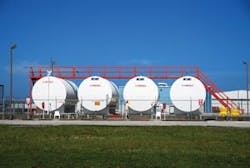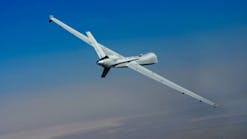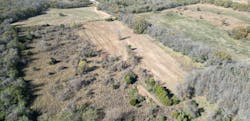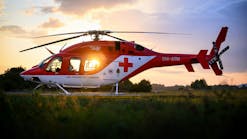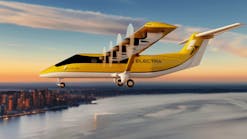The initial standard for lead emissions issued by the Environmental Protection Agency hasn’t changed since 1978; until now that is. Last year, the Friends of the Earth environmental group filed a petition with EPA requesting that lead emissions standards be proposed for general aviation aircraft to improve health protection for at-risk groups. Last month, after evaluating the science of lead and public comment on the issue, EPA published its final ruling to revise the National Ambient Air Quality Standards (NAAQS) for lead. The impact of the new standard on the general aviation community remains to be seen as alternatives to avgas don’t come easy, or cheap.
Lead has always been regulated by the EPA as a contaminant under the Clean Air Act as part of the National Ambient Air Quality Standards (NAAQS). When the orginal standard was set, states were required to measure local air quality near potential sources of lead emissions and, if the sources exceeded the allowable limit, action needed to be taken to reduce the emissions. This, in part, led to the ban of leaded automobile gasoline in 1996.
EPA recently reassessed all potential sources of lead emissions and the health impacts of lead in the local air quality. The reassessment led to the revision to NAAQS in October which tightened the amount of allowable airborne lead emissions by ten times, from 1.5 micrograms per cubic meter of air (ug/m3) to 0.15 ug/m3.
States have been required once again to measure lead levels near all potential sources which emit greater than one ton of lead per year as well as all population areas greater than 500,000.
Of the the many local sources identified by EPA, general aviation airports are considered one because of the use of leaded avgas (100LL) by piston-driven aircraft.
According to Walter Desrosier, VP of engineering and maintenance for the General Avation Manufacturers Association (GAMA), the key reason why lead was not banned from aviation when it was orginally banned from automotive use is that to date, no alternative to avgas is available, which presents significant safety problems for aircraft.
Owen Busch, vice president of supply and devolopment for Avfuel, an independent fuel supplier, echoes Desrosier’s sentiment.
“A replacement fuel cannot comprimise the safety of the aircraft; the industry doesn’t have the likley candidate in hand yet,” says Busch.
The National Air Transportation Association (NATA) says in its report to EPA, “Remove the lead, and aircraft will be made unsafe and unsuitable to fly. The usage of other fuel types will pose a very high risk on operational safety and is not recommended by aircraft engine manufacturers.”
Apart from developing and producing a viable alternative to leaded aviation fuel, steps must be taken first to determine just what kind of impact avgas has on local air quality.
Monitoring and Measuring
EPA has estimiated lead emissions for general aviation airports on the basis of the number of LTO (landing and take-off) cycles aircraft make. This determination for most planes is an overestimation since FAA data on LTO cycles per airport include aircraft fueled by both jet fuel and avgas.
Of 3,414 general aviation airports identified by EPA, only five were estimated as emitting more than the acceptable one ton of lead per year. These airports are Van Nuys, CA; Centennial, CO; Phoenix Deer Valley, AZ; Orlando Sanford, FL; and Daytona Beach, FL.
The EPA has set up specific benchmarks for the measuring of lead in the air. Including general aviation among other sources, EPA estimates that 236 new or relocated monitoring sites will be necessary to satisfy monitoring requirements. Half of all newly required monitors are to be operational by January 1, 2010, with the other half operational by January 1, 2011.
By June 2013, states must submit reports to the EPA outlining steps planned to be taken in order to reduce lead emissions should local air quality be in violation of EPA standards. By January 2017, states must measure again to show that they have successfully reduced lead emissions to meet NAAQS.
A matter of octane
There has yet to be an additive other than lead introduced to aviation fuel which produces the high octane necessary for the safe operation of high-performance piston-driven aircraft.
“At this time, I do not believe it is viable to think that there is some different kind of additive to get to the same level of octane performance as 100LL,” says Desrosier.
FAA agrees, stating in a report to EPA that extensive testing and analysis of a number of additives has not revealed a “drop-in” replacement for the additive tetra ethyl lead (TEL). “Drop-in” refers to an additive which can be blended with a fuel without having to modify the aircraft in any way or add to the existing fuel supply infrastructure.
Additive prospects such as MMT, a magnesium additive which enhances octane, was found to have negative synergistic effects on engine detonation performance, relates FAA.
“So we are faced with a lower octane fuel, which means a very large impact on the transition for the higher horsepowered aircraft,” says Desrosier.
General aviation will continue to fuel its aircraft with leaded avgas until an alternative is formulated and produced, but even the supply of the lead additive for avgas is at risk.
There is currently only one company, Innospec, which produces and supplies TEL. Desrosier believes that as more countries move away from leaded automobile gasoline, the demand for TEL will decline and, even if the company determines that there is still a market to justify continued production, the price for leaded avgas will probably rise.
“We expect that by 2010, the remaining countries in the world that still use leaded auto fuel will likely stop, and that will have an impact on the demand for TEL,” says Desrosier.
FAA indicates that Innospec will be able to supply TEL to the aviation community indefinetly.
As for now, according to comments submitted to EPA by the Aircraft Owners and Pilots Association (AOPA), lead is absolutely needed in aviation fuel. TEL is added to aviation gasoline to increase octane for high-performance aircraft, prevent knock, and prevent valve seat recession and subsequent loss of compression for engines without hardened valves.
According to AOPA, “the use of a leaded fuel in high compression aircraft engines ensures safe flight.”
A matter of proportions
Roughly 70 percent of the general aviation fleet may be able to use unleaded automotive gasoline (mogas) for operation, but this group of aircraft only consumes 30 percent of the amount of fuel supplied to general aviation. The inverse-ratio is also true. While 30 percent of general aviation aircraft have high compression engines and must use leaded avgas, this group of aircraft consume the majority, 70 percent, of the fuel supplied.
According to AOPA, avgas consumption by this portion of the fleet is estimated to be high for two reasons: these aircraft burn more fuel per hour of operation than aircraft with smaller compression engines, and these aircraft are employed in business transport and long haul trips more often than aircraft with smaller engines.
This loose statistic, often referred to as the “70/30 split,” is verified by AOPA, GAMA and Avfuel. What this means is that it is not viable to simply take the lead out of avgas and run the fuel in all general aviation aircraft. The resulting fuel provides an insufficient octane rating for the high-performance aircraft and, thus, safety problems.
It is also been considered not viable to have two types of fuel for general aviation use. Mandating the use of leaded fuel for the high-performance aircraft and unleaded mogas for aircraft with low-compression engines creates a myriad of financial burdens for many segments of the industry.
“We would have to require that all the FBOs and our distribution infrastructure be able to handle two separate fuels,” says Desrosier.
According to Todd Petersen of Petersen Aviation, it’s also getting more difficult to fuel lower performance aircraft with mogas.
Petersen Aviation sells supplemental type certificates (STC) to aircraft owners so they can operate their airplanes with mogas as opposed to avgas. Because mogas is not widely available at airports, most pilots who attain these STCs must purchase fuel at an automobile gas station and then take the fuel to their plane at the airport.
FAA states that approximately 50,000 airplanes are currently operating on unleaded mogas in the U.S.
These days, Petersen says, most automobile gasoline contains Ethanol, and Ethanol has been proven to be entirely incompatible with aircraft engines.
“There are many parts of an airplane that are incompatible with Ethanol,” says Desrosier.
According to AOPA, “the general aviation industry has significant concerns about Ethanol’s use in aviation.”
Petersen says that unless something is done to guarantee the distribution of conventional gasoline, there will be no suitable unleaded gasoline to place at airports or for individual owners to obtain on their own.
“It cannot be emphasized enough that the recent expansion of Ethanol in the gasoline supply is cutting off the only unleaded alternative to 100LL currently available to pilots in both the U.S. and Europe,” says Petersen.
Replacement Initiatives
The Coordinating Research Council (CRC) is a non-profit organization that directs engineering and environmental studies on the interaction between transportation equipment and petroleum products.
The CRC, led by the petroleum companies, has a committee soley dedicated to conducting research and development for a potential replacement candidate for 100LL avgas. The committee is called the Unleaded Avgas Development Group, and they have been working on the issue for more than a decade.
Based on a report published by the CRC earlier this year, which is a culmination of all the research on an avgas replacement to date, Desrosier now describes the general aviation industry as entering a transitional phase as far as this issue is concerned.
“We are in the process of evaluating all that data and making a determination as to what is the best possible unleaded avgas fuel that would be available today,” says Desrosier.
One answer Desrosier says that they did get from the report so far is that there is not going to be a seamless “magic bullet” fuel which can be utilized by both high- and low-compression aircraft engines.
Other alternatives to avgas include the certification of diesal piston engines which can operate on jet fuel. According to FAA, two engines have been certified to date and they estimate that about 200 of these diesal engines are currently operating in the U.S. in the Diamond DA-42 Twin Star, the Cessna 172, and the Piper PA-28 airplanes.
Teledyne Continental Motors also recently stated that it is developing a 300-horsepower diesal engine to replace some of its gasoline-based IO550 piston engines.
